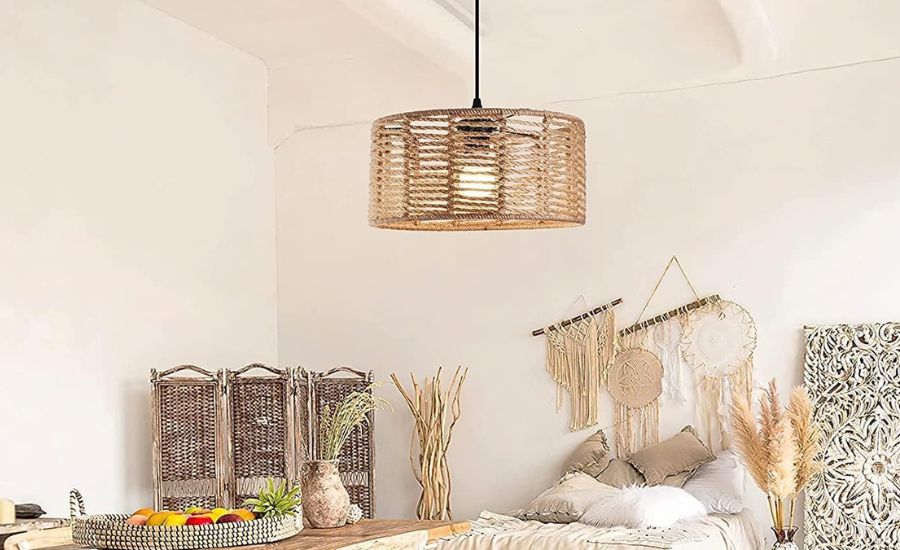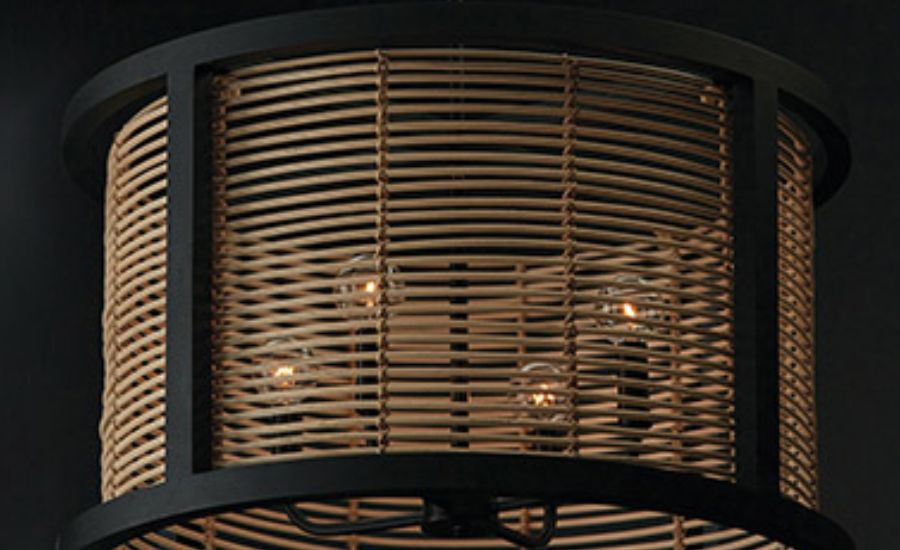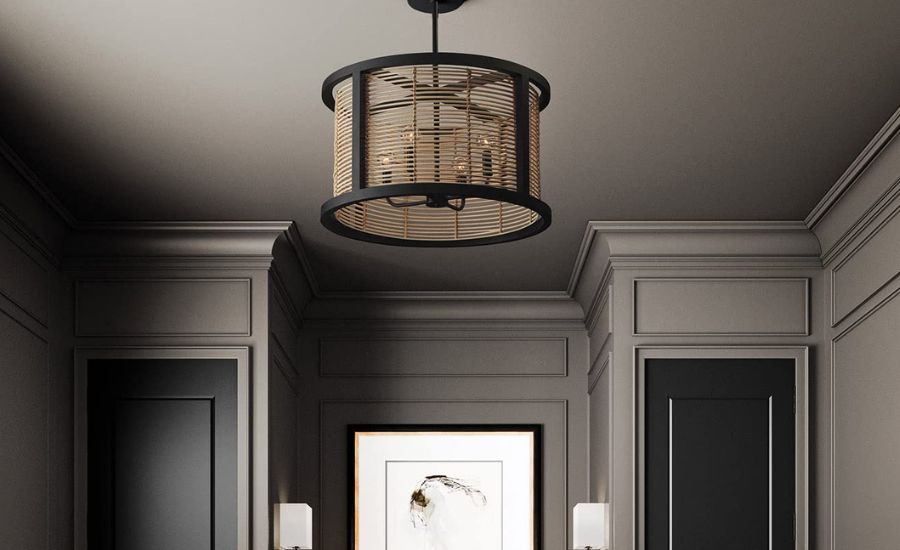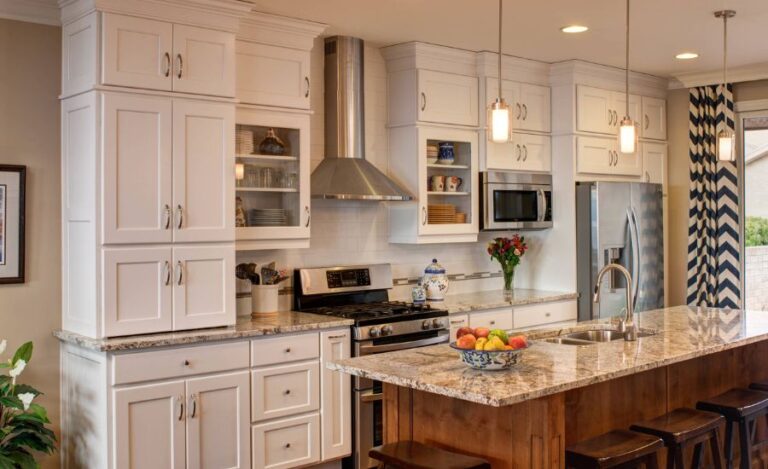Rico Loza Capital Lighting Supply, Importance, Right & More
Introduction to Rico Loza and Capital Lighting Supply
Lighting is more than just a functional necessity; it’s an art form that shapes the mood, aesthetic, and purpose of a space. Rico Loza Capital Lighting Supply embodies this philosophy, offering expertise that transforms ordinary rooms into breathtaking environments. With a deep understanding of the interplay between light, design, and human emotion, Rico Loza has carved a niche as a trusted leader in the lighting industry. Whether you’re revamping your home or creating an inviting business atmosphere, Rico’s insights and products promise to illuminate your space in ways that inspire and delight.
The Importance of Proper Lighting in Any Space

Lighting is a cornerstone of design, capable of significantly altering the look and feel of a room. Here’s why proper lighting is crucial:
- Enhances Mood and Ambiance
- Warm, soft lighting fosters comfort and relaxation, making it ideal for living rooms or bedrooms.
- Cool, bright lights promote focus and productivity, perfect for offices or workspaces.
- Improves Functionality
- Proper lighting ensures tasks are performed efficiently, whether reading, cooking, or working.
- Task-specific lighting, such as under-cabinet lights in kitchens, helps prevent strain and enhances visibility.
- Increases Safety
- Adequate illumination reduces the risk of accidents in high-traffic or hazardous areas, such as stairways and driveways.
- Motion-sensor lighting adds security by deterring potential intruders.
- Elevates Aesthetic Appeal
- Well-designed lighting highlights architectural features and decor.
- Accent lights can draw attention to artwork or focal points, adding character to a space.
- Energy Efficiency
- Modern LED and energy-efficient fixtures save on electricity bills while providing superior light quality.
The right lighting isn’t just about utility—it’s a tool to create spaces that inspire and comfort.
How to Select the Right Lighting for Your Space
Lighting plays a crucial role in defining the ambiance, functionality, and style of your home or workspace. To create a well-lit and visually appealing environment, here’s a step-by-step guide to choosing the correct lighting tailored to your needs:
1. Define the Purpose of the Space
Before selecting lighting fixtures, consider the primary use of the area:
- Relaxation Zones: For spaces like living rooms or bedrooms, opt for soft, warm lighting to create a calming and cozy atmosphere.
- Workspaces: Bright, focused lighting with cooler tones works best for home offices, kitchens, or study areas.
- Accent Areas: Use task or accent lights to highlight artwork, architectural features, or specific focal points in the room.
2. Assess the Room’s Size and Layout
- Large Spaces: Big rooms often require layered lighting, combining multiple fixtures such as overhead lights, floor lamps, and wall sconces to ensure even illumination.
- Small Spaces: Compact areas benefit from strategically placed lights, like recessed or track lighting, to make the room feel spacious and eliminate shadows.
- High Ceilings: Chandeliers or pendant lights can make a bold statement while providing ample light for tall rooms.
3. Match Lighting to Your Style
Your choice of lighting should reflect your personal taste and complement the decor:
- Modern Style: Look for sleek, minimalist fixtures with clean lines, like recessed lights or geometric pendant lamps.
- Traditional Aesthetic: Opt for ornate chandeliers, elegant sconces, or vintage-inspired table lamps.
- Eclectic Vibe: Mix and match unique fixtures that showcase your personality, blending various designs and finishes.
4. Choose the Right Color Temperature
Color temperature significantly influences the mood and functionality of a room:
- Warm Light (2700K–3000K): Best for living rooms, dining rooms, and bedrooms where comfort and relaxation are a priority.
- Neutral Light (3500K–4000K): Ideal for kitchens and bathrooms, providing clarity without being too harsh.
- Cool Light (5000K–6500K): Perfect for workspaces or areas requiring high visibility, as it enhances focus and mimics natural daylight.
5. Prioritize Energy Efficiency
Modern lighting options like LEDs provide long-lasting, cost-effective solutions:
- Energy Savings: LEDs consume significantly less energy than traditional bulbs, reducing electricity bills.
- Versatility: Available in various shapes, sizes, and colors to match any decor theme.
- Durability: With lifespans of up to 25,000 hours, LEDs minimize the need for frequent replacements.
6. Layer Your Lighting
To create a dynamic and visually appealing space, incorporate multiple lighting layers:
- Ambient Lighting: Provides general illumination for the entire room (e.g., chandeliers, recessed lights).
- Task Lighting: Focuses on specific activities like reading, cooking, or working (e.g., desk lamps, under-cabinet lighting).
- Accent Lighting: Adds drama and highlights focal points, such as artwork or architectural features (e.g., track lighting, spotlights).
7. Ensure Proper Placement
Even the best fixtures won’t achieve the desired effect without proper placement:
- Height: Install pendant lights or chandeliers at an appropriate height—typically 30–36 inches above tables or countertops.
- Spacing: For recessed lighting, ensure even distribution across the ceiling to avoid dark spots.
- Layer Combination: Balance multiple light sources by placing floor lamps in corners and table lamps near seating areas.
8. Don’t Forget Dimmers
Dimmers allow you to adjust light intensity based on your needs and mood:
- Brighten the room for tasks or gatherings.
- Dim the lights for a relaxed evening or movie night.
Dimmers also help conserve energy and extend the life of your bulbs.
Understanding Different Types of Lighting Fixtures
Selecting the right fixture is key to achieving the desired effect in any room. Here’s a breakdown of popular options and their purposes:
- Chandeliers
- Known for elegance and grandeur, chandeliers serve as a statement piece in dining rooms, foyers, or large living areas.
- Pendant Lights
- Ideal for focused lighting, they work well above kitchen islands or dining tables.
- Available in various styles to match modern, industrial, or traditional decor.
- Wall Sconces
- Space-saving fixtures that enhance ambiance.
- Perfect for hallways, bedside lighting, or as decorative accents.
- Recessed Lighting
- Embedded in ceilings, they offer a clean, uncluttered look.
- Excellent for providing general lighting in modern interiors.
- Floor and Table Lamps
- Versatile and portable, they add warmth and charm to any room.
- Often used for reading nooks or bedside lighting.
- Track Lighting
- Features adjustable heads to direct light where it’s needed.
- Common in galleries or kitchens to highlight specific areas.
Understanding these options ensures you can design a space that balances functionality with style.
Tips and Techniques for Perfect Lighting by Rico Loza
Achieving the ideal lighting for your space is more than just selecting a few light fixtures. It involves a blend of creativity, balance, and strategic planning. Rico Loza, an expert from Capital Lighting Supply, shares invaluable tips to help you illuminate your space effectively and stylishly. Here’s how you can achieve the perfect lighting in your home or business.
1. Layering Light Sources for Depth and Ambiance
One of the most important techniques for creating a well-lit space is layering your light sources. Layering involves using multiple types of lighting in a room to enhance its atmosphere and functionality.
- Ambient Lighting: This is the foundation of any lighting scheme, providing general illumination for the entire room. Ceiling fixtures like chandeliers or recessed lights are ideal for creating a warm, even light across the space.
- Task Lighting: Focused lighting is necessary for specific activities like reading, cooking, or working. Pendant lights over kitchen islands, desk lamps for home offices, and under-cabinet lights are great for illuminating task areas without causing harsh shadows.
- Accent Lighting: This type of lighting adds drama and emphasizes particular areas or objects. Use spotlights or track lighting to highlight artwork, sculptures, or architectural features in your home. This layer adds personality and makes a room feel more dynamic.
By combining these three layers—ambient, task, and accent lighting—you can create a well-balanced space that feels inviting and functional. The interplay between these lights not only enhances usability but also contributes to a visually appealing environment.
2. Dimming Options for Mood Flexibility

Dimming your lights is an easy and effective way to change the mood of a room. The ability to adjust brightness levels gives you control over the ambiance, allowing you to adapt the lighting to different activities or times of day.
- Traditional Dimmer Switches: These allow you to adjust the brightness of your lights based on your needs, whether it’s bright light for reading or softer illumination for a relaxing evening.
- Smart Dimmers: If you’re incorporating home automation systems, smart dimmers take convenience to the next level. With a smartphone app, you can control your lighting from anywhere in the room or even program it to change automatically throughout the day.
- Compatibility with LED Bulbs: If you are using LED bulbs, ensure they are compatible with your dimmer switch to avoid flickering or buzzing. LED dimmers can enhance energy efficiency and make your lighting system more adaptable.
The combination of layered lighting and dimming options ensures that you can create a versatile and comfortable lighting scheme that suits any occasion.
3. Proper Placement of Fixtures
Where you place your lighting fixtures can have a profound impact on the room’s overall ambiance and functionality. Good placement can emphasize the best aspects of a room, while poor placement can create unnecessary shadows or disrupt the flow of space.
- Focal Points: First, identify the key areas of your room that you want to highlight, such as artwork, a beautiful piece of furniture, or architectural features like fireplaces. Position your lights to emphasize these elements.
- Height of Suspended Lights: Pay attention to the height at which you hang chandeliers or pendant lights. These fixtures should be high enough to allow for comfortable movement but low enough to effectively illuminate the surfaces below, like dining tables or kitchen islands.
- Task Lighting Locations: For spaces like home offices or kitchens, ensure that task lighting is properly placed. Consider adding sconces beside mirrors or under-cabinet lighting to provide focused light without harsh shadows or eye strain.
- Experiment with Angles: The angle of your fixtures matters. For example, angled wall sconces can create visual interest and depth, while upward-facing floor lamps can brighten corners and add warmth to a room.
Strategically placing your fixtures creates a balanced and functional lighting layout that not only enhances your space’s usability but also brings a sense of harmony.
4. Maximizing Natural Light
Natural light can completely transform a room. It offers a sense of warmth and openness that artificial lighting alone cannot replicate. Incorporating natural light into your space can help reduce reliance on artificial lighting and create an airy, vibrant atmosphere.
- Use of Windows: Maximize the natural light entering your home by choosing windows or skylights that allow sunlight to flow freely into your rooms. If you have limited window space, mirrors can help reflect and amplify the available light.
- Light Colors for Reflection: The color scheme of your walls and furnishings can influence how much light is reflected in the room. Lighter tones, like soft whites and pastels, can help brighten a space, making it feel more open and welcoming.
- Sheer Curtains for Light Control: Instead of heavy drapes that block sunlight, opt for sheer curtains or blinds. These allow you to control the amount of light while still letting daylight flood the room.
- Greenery to Enhance Light: Incorporating plants in well-lit areas not only improves the aesthetic appeal of a room but also creates a healthier environment. Plants thrive in natural light, and they bring an element of nature indoors, creating a harmonious balance.
By incorporating natural light and minimizing obstructions, you create a bright, energetic space that feels open and inviting.
Common Mistakes to Avoid When Choosing and Installing Lighting
Selecting and installing lighting can often feel overwhelming, especially with the wide variety of fixtures available. However, avoiding a few key mistakes can make a significant difference in achieving the right ambiance and functionality for your space.
1. Misjudging Fixture Size
One of the most common errors when choosing lighting is selecting fixtures that don’t suit the scale of the room. A large chandelier or pendant light in a small room can overwhelm the space, making it feel cramped and unbalanced. Conversely, choosing small fixtures for large areas, like a grand foyer or living room, can leave the space feeling dim and underwhelming. It’s important to ensure that the size of your lighting fixtures matches the proportions of the room for a harmonious and functional look.
2. Ignoring Light Temperature
Light temperature—referring to whether the light is warm, neutral, or cool—plays a crucial role in setting the mood of a room. Warm lighting creates a cozy, inviting atmosphere, while cooler tones are more energizing and conducive to focus. Using a single type of light temperature throughout your home may result in an unbalanced feel. For example, an entirely cool-lit living room can feel harsh, while a warm-lit office may make it harder to concentrate. Mixing various light temperatures according to the needs of each space can ensure a more dynamic and comfortable living environment.
3. Improper Fixture Placement
Another common mistake is incorrect fixture placement. Fixtures that are hung too high or too low can disrupt both the visual flow and functionality of a space. For instance, hanging a light too low over a dining table may cause discomfort while eating, while a light fixture placed too high may fail to provide sufficient illumination. When installing lighting, always consider the height and interaction of individuals with the light, ensuring that the fixture serves its intended purpose effectively.
4. Overlooking Dimming Options
Many people overlook the benefits of dimmable lighting. Dimmers allow you to adjust the brightness based on the time of day, the activity, or the desired mood, making them an invaluable feature. Without dimming capabilities, you may find yourself constantly adjusting multiple light sources to achieve the right ambiance. Installing dimmable switches can help you create a flexible, comfortable lighting scheme, eliminating the need for excessive fixtures.
The Rico Loza Capital Lighting Supply Advantage
What sets Rico Loza Capital Lighting Supply apart is the emphasis on personalization and quality. Here’s what customers can expect:
- Tailored Solutions: Rico’s team works closely with clients to understand their goals, ensuring every project aligns with their vision.
- High-Quality Fixtures: A curated selection of stylish, durable, and energy-efficient lighting options.
- Expert Guidance: From design consultations to technical advice, Rico Loza offers unmatched expertise to bring concepts to life.
Whether creating a luxurious ambiance for a restaurant or adding functional elegance to a home office, Rico Loza’s approach ensures exceptional results.
Conclusion
Achieving the perfect lighting in any space requires thoughtful consideration and a blend of creative techniques. By layering different types of lighting, utilizing dimming options for flexibility, carefully positioning your fixtures, and embracing the beauty of natural light, you can transform any room into a beautifully illuminated environment. Rico Loza’s expert advice helps you navigate these choices with confidence, ensuring that your lighting is not only functional but also enhances the overall ambiance of your space.
With these simple yet effective techniques, you’ll be able to create a space that’s not only well-lit but also visually appealing, comfortable, and truly your own.
FAQs on Lighting Selection and Installation
1. What should I consider when choosing lighting for my space?
When selecting lighting, consider factors such as the room size, purpose, and your personal style. For example, smaller rooms may need more compact fixtures, while larger spaces might benefit from multiple light sources. The function of the room is important too—task lighting works best in workspaces, while ambient lighting creates a relaxing atmosphere in living areas.
2. How does light temperature impact a room’s atmosphere?
Light temperature plays a key role in setting the mood of a room. Warm light (yellow tones) creates a cozy, inviting atmosphere perfect for bedrooms or living rooms, while cooler light (blue tones) is better suited for workspaces or kitchens, as it promotes focus and clarity. Mixing both types of light can help balance functionality and comfort.
3. What is the best way to layer light in a room?
Layering light involves combining ambient, task, and accent lighting to create depth and versatility. Ambient lighting serves as the room’s base, providing general illumination. Task lighting, like desk lamps or kitchen lights, is focused on specific areas where work or reading happens. Accent lighting, such as spotlights or wall sconces, highlights artwork or architectural features to add drama.
4. Why is it important to have dimming options for my lighting?
Dimming options allow you to adjust the brightness based on the time of day, activity, or desired mood. They offer flexibility, making it easy to switch from bright, functional light for work to softer, ambient light for relaxation. Dimmers can also help save energy by reducing light intensity when full brightness isn’t needed.
5. How do I position my light fixtures for optimal effect?
The placement of light fixtures is critical for both functionality and aesthetics. For example, chandeliers should be hung at a height that allows clear sightlines and easy movement underneath, while providing ample light to dining or living areas. Task lighting should be placed where focused illumination is needed, like above a kitchen counter or next to a reading nook.
Interesting Lighting Facts
- Lighting Can Affect Your Mood and Productivity:
The right lighting can enhance mood and productivity. Bright, cool light boosts alertness, while warm light encourages relaxation and comfort. In offices or study spaces, cooler lights help with focus, while warmer tones in bedrooms create a cozy, restful environment. - Natural Light is Beneficial for Health:
Exposure to natural light helps regulate the body’s internal clock, improving sleep quality and overall health. Sunlight increases serotonin production, which boosts mood and energy levels. Incorporating natural light into your home can also lead to higher levels of Vitamin D. - Smart Lighting Systems Are Becoming Popular:
Smart lighting technology is rapidly advancing, offering features like remote control via smartphones and voice commands. These systems allow you to adjust the brightness and color of lights, saving energy and enhancing comfort by tailoring your lighting to your needs. - Lighting Can Improve Home Security:
Proper outdoor lighting, especially around entryways and pathways, can help improve home security. Well-lit areas make it harder for intruders to hide and create a welcoming atmosphere for guests, ensuring both safety and functionality. - Light Color Can Influence the Perception of Space:
The color temperature of your lighting can make a room appear larger or smaller. Cool-toned light can make a space feel more open, while warm-toned light can create a cozy, intimate atmosphere. Choosing the right light can help emphasize the design elements of your space.
These insights will help guide your decisions when choosing and installing lighting in your home, ensuring a perfect blend of style, function, and comfort.
For more Information About Home Improvement visit idealrular.com

